Planning a road trip? Love watching animals? This guide is perfect for you. We will show you the best national parks for family wildlife watching. These parks have amazing animals and beautiful views. You will learn where to go and what to see.
Traveling across the USA gives you the chance to see many different animals. From bears in the mountains to dolphins by the coast, there’s so much to see.
Each park offers something unique. It’s a fun way to spend time with your family and learn about nature.
Pack your bags and get ready. We’ll help you plan the best wildlife road trip ever. You will create great memories and maybe spot some rare animals.
Stay tuned to find out the best parks for your trip. Let’s start this amazing journey together.
1. The Blue Ridge Parkway

- Starting Point: Great Smoky Mountains, North Carolina
- End Point: Shenandoah National Park, Virginia
- Approximate Distance: 469 miles
- Recommended Duration: 5 days
- Stay Options: Campsites, Lodges, Hotels
- Adventure Activities: Hiking, Swimming, Scenic Drives, Picnicking
Road Trip Overview
The Blue Ridge Parkway is perfect for a family wildlife watching road trip. This scenic route connects the Great Smoky Mountains to Shenandoah National Park. It’s full of curves, overlooks, and side hikes to swimming holes and mountain trails.
The road has a speed limit of 25 to 45 miles per hour, making it safe for family travel. Picnic areas, trailheads, and scenic views along the way make it even more enjoyable.
Wildlife And Nature
While driving on the Blue Ridge Parkway, you can see many animals. In the Great Smoky Mountains, look for black bears, white-tailed deer, and elk.
The park’s streams and waterfalls are home to fish and amphibians. In Shenandoah, keep an eye out for bobcats, foxes, and many bird species. The lush landscape and diverse habitats make this route rich in wildlife.
Popular Stay Options
There are many great places to stay on your journey. In the Great Smoky Mountains, consider Elkmont Campground or LeConte Lodge.
As you travel, you can stay at Blue Ridge Parkway campgrounds like Mount Pisgah Campground. Near Shenandoah National Park, Big Meadows Lodge offers cozy rooms and stunning views.
These spots provide comfort and convenience, making your family road trip relaxing and enjoyable.
2. Wyoming And Montana Road Trip
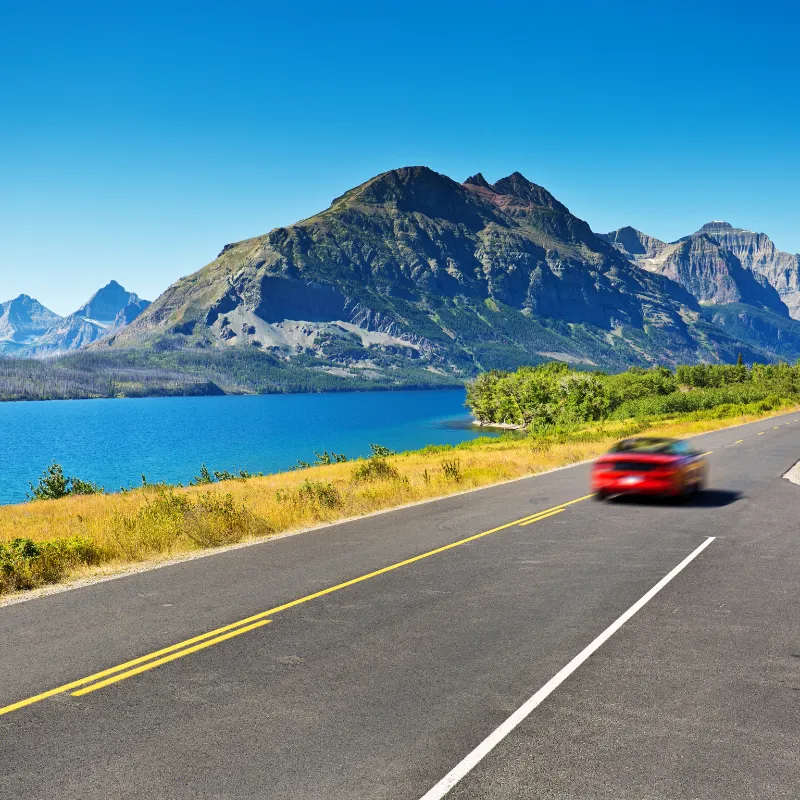
- Starting Point: Glacier National Park, Montana
- End Point: Grand Teton National Park, Wyoming
- Approximate Distance: 800 miles
- Recommended Duration: 6 days
- Stay Options: Campgrounds, Lodges, Hotels
- Adventure Activities: Hiking, Wildlife Watching, Scenic Drives, Picnicking
Road Trip Overview
This road trip through Wyoming and Montana is ideal for family wildlife watching. Starting at Glacier National Park and ending at Grand Teton National Park, the journey covers around 800 miles. It’s best to take this trip between June and September.
You will begin at Glacier National Park, known for its glaciers, lakes, and over 700 miles of hiking trails. Then, head down to Yellowstone National Park and visit Gardiner. The route offers stunning landscapes and many family-friendly activities.
Wildlife And Nature
On this road trip, you’ll encounter diverse wildlife. Glacier National Park is home to mountain goats, grizzly bears, and moose. Its sparkling blue lakes and rugged mountains are breathtaking.
In Yellowstone, you can see bison, elk, wolves, and geysers. The park’s unique geothermal features are fascinating. In Grand Teton National Park, look for pronghorns, black bears, and various bird species. The park’s majestic peaks and serene lakes create a perfect habitat for these animals.
Popular Stay Options
For comfortable stays along your journey, there are many options. In Glacier National Park, Apgar Campground and Many Glacier Hotel offer great accommodations. Near Yellowstone, consider staying at Old Faithful Inn or Mammoth Campground.
As you reach Grand Teton National Park, Jackson Lake Lodge and Colter Bay Village are excellent choices. These accommodations provide convenience and comfort, making your family road trip enjoyable and memorable.
3. Joshua Tree To Death Valley
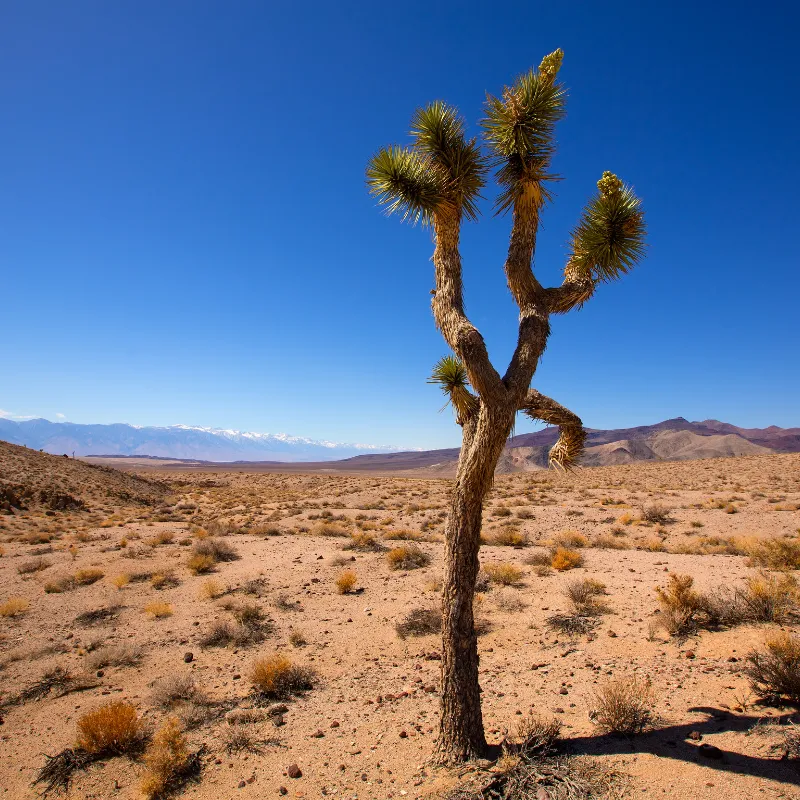
- Starting Point: Joshua Tree National Park, California
- End Point: Death Valley National Park, California
- Approximate Distance: 250 miles
- Recommended Duration: 3 days
- Stay Options: Campgrounds, Hotels
- Adventure Activities: Rock Climbing, Hiking, Scenic Drives, Wildlife Watching
Road Trip Overview
This road trip from Joshua Tree to Death Valley is best in late spring or early fall. Both parks are in the desert and can be very hot in the summer. The 250-mile drive is mostly on two-lane highways.
You’ll pass between Leghorn Lakes Wilderness and Sheephole Valley Wilderness. A great pitstop is Mojave National Preserve, home to the largest grove of Joshua Trees, natural springs, and towering dunes.
Wildlife And Nature
Joshua Tree National Park is famous for its rock climbing and hiking. The 2.5-mile Split Rock Trail is a must-do, offering a chance to scramble on signature boulders.
In Mojave National Preserve, you can see desert tortoises, bighorn sheep, and many bird species. Death Valley’s Badwater Salt Flats, the lowest and hottest point in the U.S., are a must-visit.
Look for coyotes, roadrunners, and kit foxes in the park’s unique desert environment.
Popular Stay Options
There are many great places to stay along this journey. In Joshua Tree, Hidden Valley Campground and Joshua Tree Inn are popular choices. At Mojave National Preserve, Hole-in-the-Wall Campground provides a unique desert experience.
In Death Valley, consider staying at Furnace Creek Campground or The Oasis at Death Valley. These accommodations ensure a comfortable and memorable trip for your family.
4. White Sands National Park

- Starting Point: El Paso, Texas
- End Point: White Sands National Park, New Mexico
- Approximate Distance: 100 miles from Guadalupe Mountains National Park
- Recommended Duration: 3 days
- Stay Options: Campgrounds, Hotels
- Adventure Activities: Hiking, Sandboarding, Scenic Drives, Wildlife Watching
Road Trip Overview
This road trip covers a trio of national parks: Carlsbad Caverns, Guadalupe Mountains, and White Sands. All three parks are within a couple hundred miles of each other, making El Paso an ideal starting point.
This trip is perfect for families seeking quieter parks with good campsites. The parks are less crowded, offering a more peaceful experience.
Wildlife And Nature
In White Sands National Park, the Alkali Flat Trail is a highlight. This five-mile loop takes you through the heart of the sand dunes, following red trail markers.
Look for lizards, rodents, and birds adapted to the desert environment. Guadalupe Mountains National Park offers the Devil’s Hall Trail, a four-mile rocky hike with mandatory scrambling.
Carlsbad Caverns is famous for its stunning underground formations and ranger-led tours that take you deep into the caves.
Popular Stay Options
There are several great places to stay along this journey. Near Guadalupe Mountains, Pine Springs Campground offers a convenient base. In White Sands, consider staying at nearby Alamogordo, with options like the White Sands Motel.
Carlsbad has multiple hotels and campgrounds, including Carlsbad KOA. These accommodations provide comfort and convenience, making your family road trip enjoyable and memorable.
5. Denali National Park to Kenai Fjords National Park
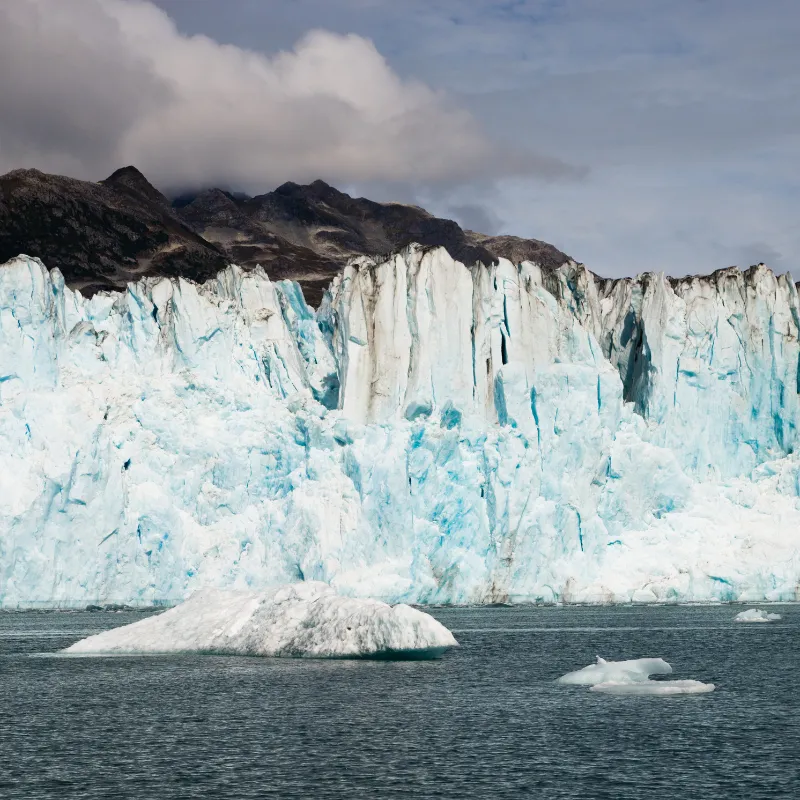
- Starting Point: Denali National Park, Alaska
- End Point: Kenai Fjords National Park, Alaska
- Approximate Distance: 370 miles
- Recommended Duration: 5 days
- Stay Options: Campgrounds, Lodges, Hotels
- Adventure Activities: Wildlife Watching, Hiking, Rafting, Boat Tours
Road Trip Overview
This road trip from Denali National Park to Kenai Fjords National Park showcases the best of Alaska. The two-lane roads offer stunning views of the state’s natural beauty.
Denali covers over 6 million acres, including the 20,310-foot Denali, tundra, and spruce forests. Kenai Fjords is different, with 600,000 acres of glaciers, inlets, bays, and islands.
The main road through Denali is limited to shuttle traffic to protect the landscape.
Wildlife And Nature
Denali is not a “drive-through” park. Private vehicles can’t go past mile 15 of the Denali Park Road. Sable Pass is a prime spot for wildlife, where you can see brown bears, caribou, and Dall sheep grazing. Consider a guided rafting trip on the Nenana River for more adventure. In Kenai Fjords, watch for Beluga whales in the inlets.
The park is mostly accessed by boat. Hike along the edge of the Harding Ice Field, the largest permanent ice field in the U.S., or take a boat trip to Bear Glacier Lagoon for a unique experience.
Popular Stay Options
There are many options along this route for comfortable accommodations. Near Denali, consider staying at Denali Park Village or Riley Creek Campground. Along the way, Talkeetna offers cozy lodges like Talkeetna Alaskan Lodge.
In Kenai Fjords, Seward provides several good choices, including Seward Windsong Lodge and campgrounds like Exit Glacier Campground. These accommodations ensure a comfortable and memorable trip for your family.
General Tips & Guidelines
- Plan Ahead: Make reservations for accommodations and activities in advance.
- Check the Weather: Prepare for variable weather conditions, especially in mountainous and coastal areas.
- Pack Wisely: Bring layers of clothing to adjust to changing temperatures.
- Stay Safe: Follow park regulations and guidelines for wildlife encounters.
- Drive Carefully: Respect speed limits and be cautious on winding roads.
- Stay Hydrated: Always carry water, especially in desert and high-altitude areas.
- Leave No Trace: Practice responsible tourism by cleaning up after yourself.
- Have Maps: Carry physical maps in case of poor cell service.
- Emergency Kit: Have a basic first-aid kit and emergency supplies.
- Respect Nature: Observe wildlife from a safe distance and do not disturb their habitats.
Essential Equipment
- Navigation Tools: GPS device, physical maps, and a compass.
- Clothing: Layered clothing, waterproof jacket, sturdy hiking boots, and hat.
- Camping Gear: Tent, sleeping bag, camping stove, and cooking utensils.
- Food and Water: Non-perishable snacks, meals, and plenty of water.
- First-Aid Kit: Bandages, antiseptic wipes, pain relievers, and any personal medications.
- Safety Gear: Flashlight, extra batteries, multi-tool, and whistle.
- Hiking Equipment: Backpack, trekking poles, and trail shoes.
- Photography Gear: Camera, extra memory cards, and tripod.
- Sunscreen and Insect Repellent: Protect your skin from sunburn and bug bites.
- Entertainment: Books, travel games, and music for the road.
End Note
Embarking on a wildlife road trip lets you connect with nature and explore stunning US landscapes. From Denali’s peaks to White Sands’ dunes and Kenai Fjords’ glaciers, each park offers unique adventures.
Enjoy hiking, wildlife spotting, and scenic drives, perfect for a family road trip. Plan ahead, pack wisely, and follow safety guidelines for a smooth journey.
Reflect on the natural beauty and diverse wildlife, cherishing time with loved ones. These trips foster appreciation for the environment and its preservation.
Gear up, hit the road, and enjoy your family wildlife adventure. The memories will last a lifetime. Safe travels!






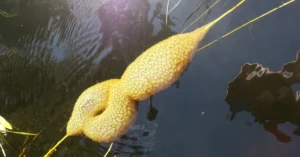

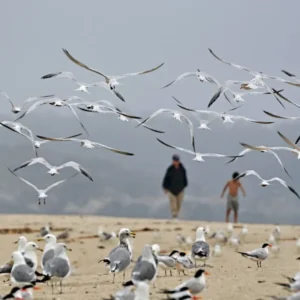
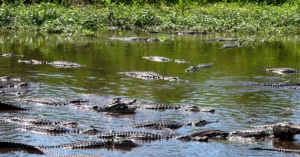
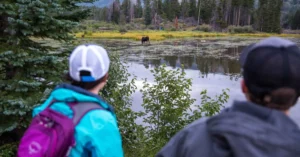
3 thoughts on “The Ultimate Wildlife Watching Road Trip With Family – USA Edition”
Love the idea of hitting all these epic spots! White Sands has been on my bucket list for a while now, and it’s great to see it featured here. Any specific tips for photography in those dune landscapes, Julia?
Have you tried using a polarizing filter for the dunes? It can help enhance the blue of the sky against the white sand!
Good tip, LensLover! I haven’t tried that but definitely will on my next trip. Thanks!